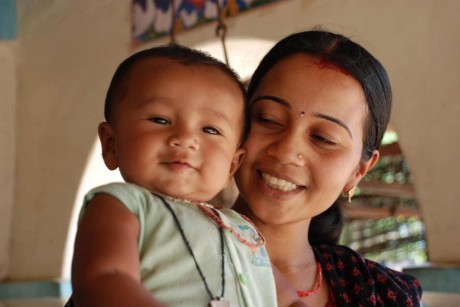February 7-9th, Mahabalipuram, Chennai
For Immediate Release

India's Leadership Furthers Global
Child Survival Movement
By William Hammink, India Mission Director
More Child Survival posts from the Impact Blog
NEW DELHI — The Ministry of Health and Family Welfare (MOHFW) today announced the upcoming National Summit on “Call to Action for Child Survival and Development”, scheduled to be held in Mahabalipuram, Tamil Nadu from February 7-9, 2013. Organized in partnership with UNICEF and USAID, the Summit is a critical platform that will strategically engage over 200 delegates including 27 international and 35 national experts, key policy makers, planners and implementers from the health sector representing all states of India, representatives and heads of UN and development agencies, global health experts and practitioners, Civil society members and private sector, to discuss and debate on Child Survival and development in India. The Summit will be an opportunity for sharing experiences and challenges; celebrate successes in maternal, newborn, child survival & development programmes; and pledge to meet India’s child survival and development goals.
India co-convened the ‘Global Child Survival Call to Action: A Promise to Keep’ Summit in Washington DC in June 2012, along with Ethiopia and the United States of America. The Call to Action: For Every Child in India follows from Hon’ble Union Minister for Health and Family Welfare, Shri Ghulam Nabi Azad’s commitment to the global audience that India shall remain in the forefront in the global war against child mortality and morbidity
With a large birth cohort of about 26 million and 158 million children in the age-group of 0-5 years, India accounts for the largest number of Under Five deaths- nearly 1.5 million, of which close to 0.8 million die within 28 days of birth. Nevertheless, steady progress in curbing child deaths has been demonstrated. The rate of decline in U5MR has been much faster than the global average: from 115 in 1990 to 59 in 2010 as against the global average of87 and 57 respectively. The U5MR, Maternal Mortality Ratio (MMR) and Total Fertility Rate (TFR) have improved significantly to 59 per 1000 live births, 212 per 100,000 live births and 2.5 respectively.
“During 2005-10, India’s decline in Under Five Mortality Rate (U5MR) has accelerated to an average of 7.5% each year. Even though the average Under five child mortality rate has always been lower in urban areas, the rate of decline in rural areas has been much faster. The rural-urban gap in child mortality has narrowed, thus reflecting improved equity in health care,” said Smt. Anuradha Gupta Additional Secretary and Mission Director, National Rural Health Mission.
Addressing the media, Mr. William Hammink, Mission Director for the U.S. Agency for International Development in India, said, "The upcoming summit demonstrates India's leadership and commitment to both the global community and the children of India. India has an opportunity to make great gains on child survival with increased commitment and funding for the most effective life-saving practices. Moreover, India’s unique culture of social entrepreneurship, innovation, and technological advances present a historic opportunity to accelerate progress in reducing childhood illness and death. The U.S. Government is proud to be a part of this initiative, and we look forward to working with the Government of India as it addresses crucial child survival issues."
Mr. Louis-Georges Arsenault, Representative UNICEF India emphasized on the need for a holistic approach to end preventable child deaths. “We require a comprehensive approach that includes not only increasing coverage of key child survival interventions, but also the related social determinants such as girls’ education, maternal (under-) nutrition and environmental determinants. Child mortality rates are consistently lower among children living in families who access safe drinking water, an improved toilet and practice hand washing with soap. As we move towards 2015 and beyond, a renewed focus on empowering women and promoting equity in access to health services will also help guide actions for child survival."
A roadmap, entitled a Strategic Approach to Reproductive Maternal Newborn Child and Adolescent Health’ (RMNCH+A) will also be launched at the Summit along with other pertinent guidelines and documents, aimed at accelerating reductions in preventable child deaths through sharper national plans and improved monitoring and evaluation.
The Global Call to Action for Child Survival: A Promise Renewed challenges countries to lower their national rates of child mortality to 20 or fewer deaths per 1,000 live births by 2035. Since June 2012, over 165 countries, hundreds of civil society organizations, private sector companies and faith-based leaders have since pledged to redouble efforts to combat child survival and improve maternal health (MDGs 4 and 5) and to focus on reaching the most disadvantaged and hardest to reach children in every country. A Promise Renewed is one of the central pillars supporting the implementation of the United Nations Secretary-General’s 2010 global strategy to improve women and children health called Every Woman, Every Child. http://apromiserenewed.org







Comment
Make a general inquiry or suggest an improvement.